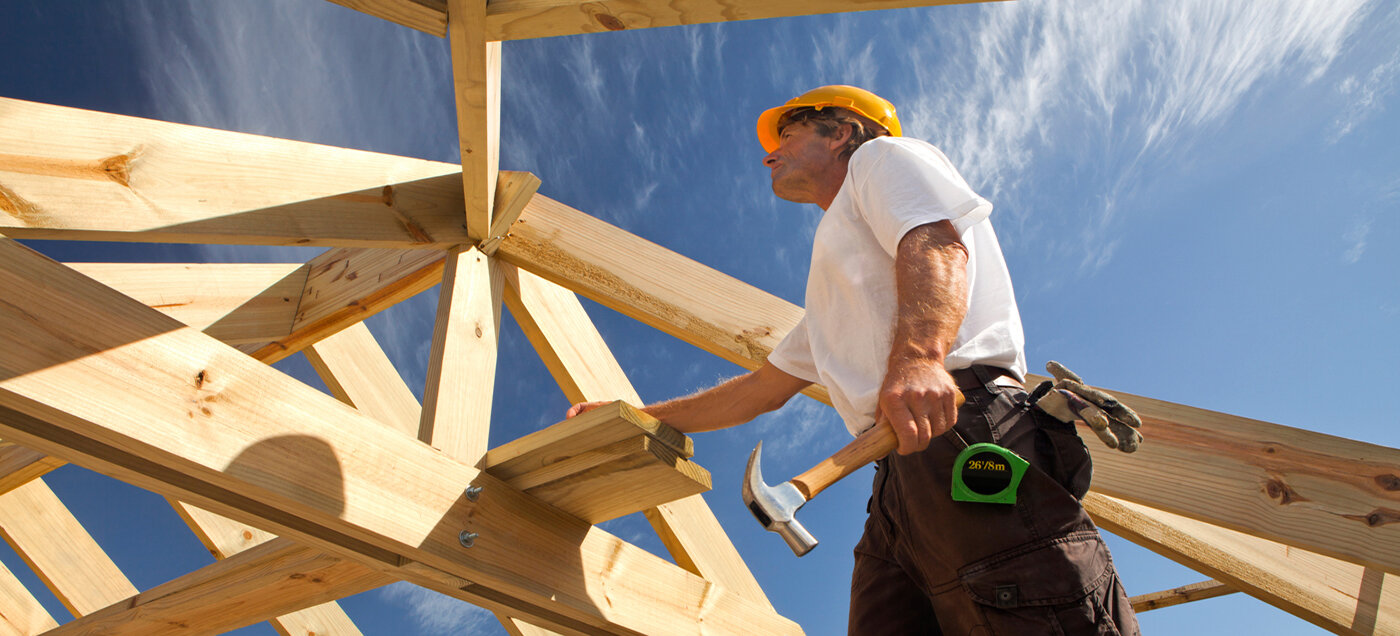Residential Real Estate News

Single Family Starts in U.S. Uptick in May
Residential News » Washington D.C. Edition | By Monsef Rachid | June 17, 2021 8:28 AM ET
According to the U.S. Department of Housing and Urban Development and the U.S. Census Bureau, overall housing starts increased 3.6 percent in May 2021 to a seasonally adjusted annual rate of 1.57 million units off of a downwardly revised April reading.
The May reading of 1.57 million starts is the number of housing units builders would begin if development kept this pace for the next 12 months. Within this overall number, single-family starts increased 4.2 percent to a 1.10 million seasonally adjusted annual rate. The multifamily sector, which includes apartment buildings and condos, increased 2.4 percent to a 474,000 pace.
"Single-family starts held firm in May as demand remains strong despite recent gains in new home costs," said Chuck Fowke, chairman of the National Association of Home Builders (NAHB). "However, single-family permits posted a decline as higher construction costs are deterring some residential construction activity. Policymakers need to help the industry's supply-chains in order to protect housing affordability."
"Single-family permits declined to the lowest pace since September 2020 as the home building market cools somewhat to adjust to higher prices and longer delivery times of building materials," said NAHB Chief Economist Robert Dietz. "The count of single-family homes permitted but not started construction is up 53 percent over the last year due to both gains for home construction since the onset of the 2020 virus crisis and the delay of some building projects due to higher costs for materials and labor."

NAR's Chief Economist Lawrence Yun also commented, "The trend since the onset of the pandemic has been notably higher single-family homebuilding and subdued multifamily construction. That tilt is a proper response, given the limited single-family home inventory and what had been a deceleration in apartment rent growth."
"Despite the month-to-month trend, or even year-to-year changes, America is facing a massive housing shortage due to multiple years of underproduction in relation to population growth. We estimate around 5.5 to 6.8 million additional housing units need to be built. America is on track for only 1.6 million and 1.7 million new housing units this year and next, respectively. That would represent the best two-year performance in 15 years, yet it would still be inadequate. Therefore, expect both rents and home prices to outpace overall consumer price inflation in the upcoming years", concluded Yun.
On a regional and year-to-date basis (January through May of 2021 compared to that same time frame a year ago), combined single-family and multifamily starts are 46.3 percent higher in the Northeast, 37.2 percent higher in the Midwest, 19.0 percent higher in the South and 26.4 percent higher in the West. These gains come off of depressed activity levels from last spring.
Overall permits decreased 3.0 percent to a 1.68 million unit annualized rate in May. Single-family permits decreased 1.6 percent to a 1.13 million unit rate. Multifamily permits decreased 5.8 percent to a 551,000 pace.
Looking at regional permit data on a year-to-date basis, permits are 43.2 percent higher in the Northeast, 36.2 percent higher in the Midwest, 29.9 percent higher in the South and 33.7 percent higher in the West.
The number of single-family homes permitted but not started construction continued to increase in May, rising to 142,000 units. This is 52.7 percent higher than a year ago.
Meanwhile, the number of single-family homes under construction is up 27.8 percent year-over-year, having increased to 652,000 homes. The number of apartments currently under construction is relatively flat at 672,000 units.
Sign Up Free | The WPJ Weekly Newsletter
Relevant real estate news.
Actionable market intelligence.
Right to your inbox every week.
Real Estate Listings Showcase
Related News Stories
Residential Real Estate Headlines
- Las Vegas Area Home Prices Uptick 4.3 Percent Annually in March
- Single-Family Rent Growth in U.S. Trends Upward in 2025
- U.S. Mortgage Rates Tick Down Post Trump Tariffs Commencement
- President Trump's 'Liberation Day' Tariffs Potential Impact on the U.S. Housing and Mortgage Markets
- Baby Boomers Biggest Cohort of U.S. Home Buyers in 2025 as Millennials Decline
- U.S. Monthly Housing Payments Hit Record High in 2025
- U.S. Pending Home Sales Uptick in February
- Global Prime Residential Rent Slowdown Continued in Late 2024
- Ireland Home Price Inflation Hits 8 Year High in Early 2025
- Existing Home Sales in America Uptick in February
- Great Miami Area Residential Sales Decline 15 Percent Annually in February
- Mortgage Rates Uptick in Mid-March, Ending 9-Week Decline in U.S.
- World Property Ventures Builds the Future of Real Estate with New Funding Round
- U.S. Builder Sentiment Declines Amid Economic Uncertainty and Rising Costs
- Black Homeownership Rates in U.S. Enjoy Largest Annual Increase of All Racial Groups
- Wealthy Renters Are Taking Over More of the U.S. Rental Market
- If U.S. Congress Does Not Extend NFIP Soon, Thousands of Daily Home Closings Impacted
- U.S. Mortgage Applications Spike 11 Percent in Early March
- Greater Palm Beach Area Residential Sales Rise in Early 2025
- New Apartments in U.S. Are Leasing at Slowest Pace on Record
- U.S. Mortgage Rates Drop to 4 Month Low in March
- Overall U.S. Mortgage Delinquency Rates Dip in December
- New Tariffs on Canada, Mexico to Impact U.S. Homebuilder Input Costs
- Monaco's Property Market: A Tale of Two Cities
- U.S. Home Purchase Cancellations Surge, 1 in 7 Sales Getting Canceled
- U.S. Pending Home Sales Hit Historic Low in Early 2025
- Greater Miami Area Residential Sales Dip in January
- Governor DeSantis Supports Ending Property Taxes in Florida
- WPV Aims to Become the Berkshire Hathaway of Real Estate Tech
- U.S. Home Sales Slump Continues in January
- Average Americans Spend 38 Percent of Monthly Income on Mortgage Payments
- Switzerland's Safe-Haven Appeal Grows with World's Wealthy Homebuyers
- U.S. Builder Confidence Rapidly Declines in February
- Las Vegas Home Sales Rise 6.7 Percent Annually in January, Condo Sales Dip
- Homebuyer Demand in America Drops to 5-Year Low in Early 2025
- Ownership More Affordable Than Renting in Most U.S. Markets
- The World's First Global Listings Service Launches, Called a GLS
- Home Prices Continue to Rise in 89 Percent of U.S. Metros in Late 2024
- Global Luxury Residential Prices Showed Gradual Improvement in Late 2024
- U.S. Construction Hiring Rate Drops to Lowest Levels in 5 Years





